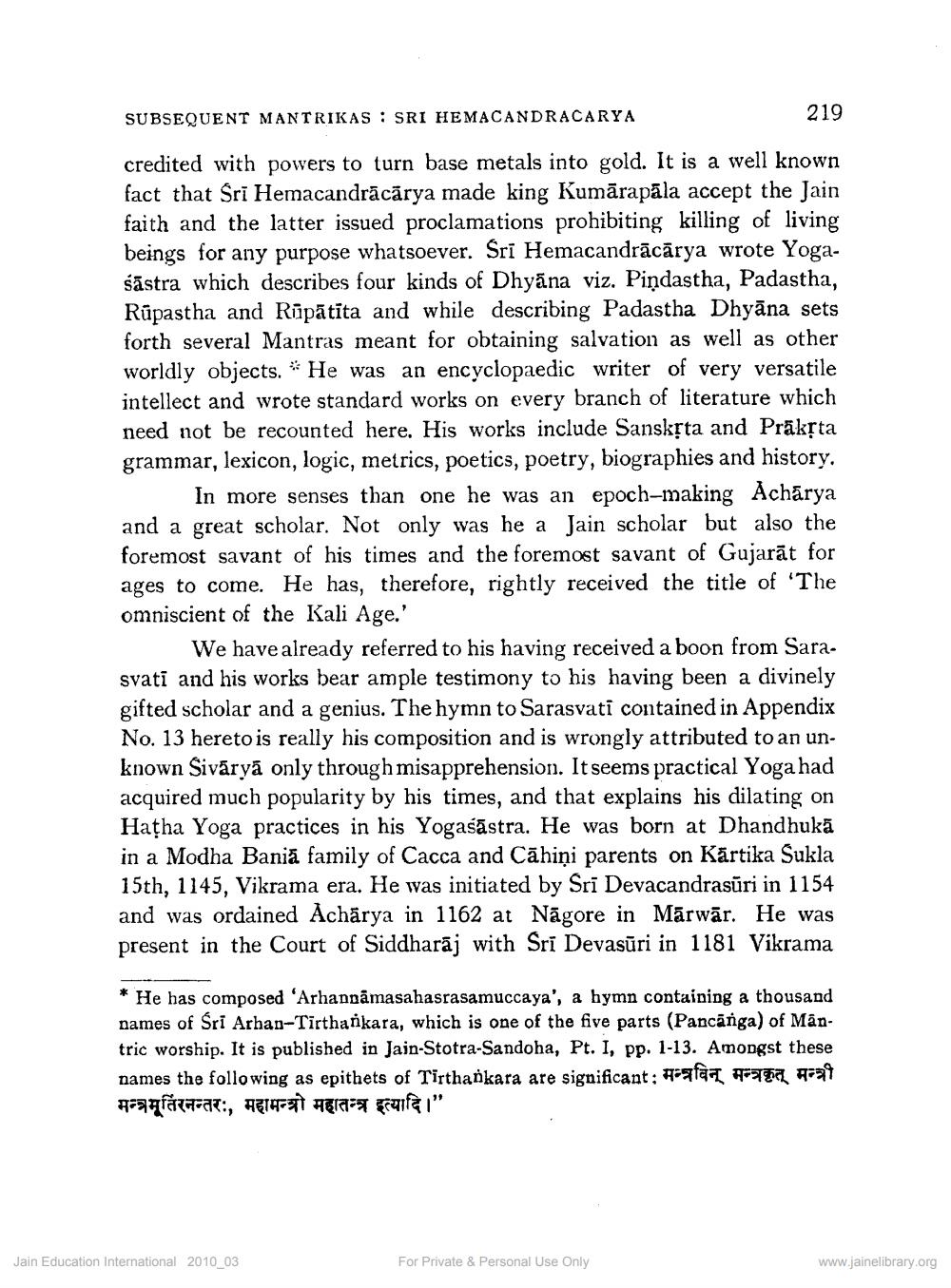________________
SUBSEQUENT MANTRIKAS : SRI HEMACANDRACARYA
219
credited with powers to turn base metals into gold. It is a well known fact that Sri Hemacandrācārya made king Kumārapāla accept the Jain faith and the latter issued proclamations prohibiting killing of living beings for any purpose whatsoever. Sri Hemacandrācārya wrote Yogaśāstra which describes four kinds of Dhyāna viz. Pindastha, Padastha, Rūpastha and Rūpātita and while describing Padastha Dhyāna sets forth several Mantras meant for obtaining salvation as well as other worldly objects. * He was an encyclopaedic writer of very versatile intellect and wrote standard works on every branch of literature which need not be recounted here. His works include Sansksta and Praksta grammar, lexicon, logic, metrics, poetics, poetry, biographies and history.
In more senses than one he was an epoch-making Achārya and a great scholar. Not only was he a Jain scholar but also the foremost savant of his times and the foremost savant of Gujarāt for ages to come. He has, therefore, rightly received the title of "The omniscient of the Kali Age.'
We have already referred to his having received a boon from Sara. svati and his works bear ample testimony to his having been a divinely gifted scholar and a genius. The hymn to Sarasvati contained in Appendix No. 13 hereto is really his composition and is wrongly attributed to an unknown Sivāryā only through misapprehension. It seems practical Yoga had acquired much popularity by his times, and that explains his dilating on Hatha Yoga practices in his Yogaśāstra. He was born at Dhandhukā in a Modha Baniã family of Cacca and Cāhini parents on Kārtika Sukla 15th, 1145, Vikrama era. He was initiated by Sri Devacandrasūri in 1154 and was ordained Achārya in 1162 at Nāgore in Mārwār. He was present in the Court of Siddharāj with Sri Devasūri in 1181 Vikrama
* He has composed 'Arhannāmasahasrasamuccaya', a hymn containing a thousand names of Sri Arhan-Tirtharikara, which is one of the five parts (Pancānga) of Mäntric worship. It is published in Jain-Stotra-Sandoha, Pt. I, pp. 1-13. Amongst these names the following as epithets of Tirthankara are significant: 99 at 164 4727 मन्त्रमूर्तिरनन्तरः, महामन्त्रो महातन्त्र इत्यादि।"
Jain Education International 2010_03
For Private & Personal Use Only
www.jainelibrary.org




